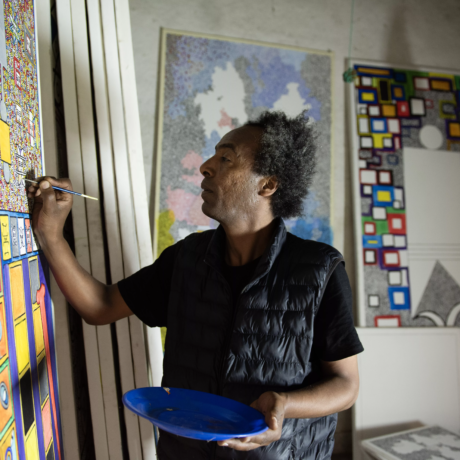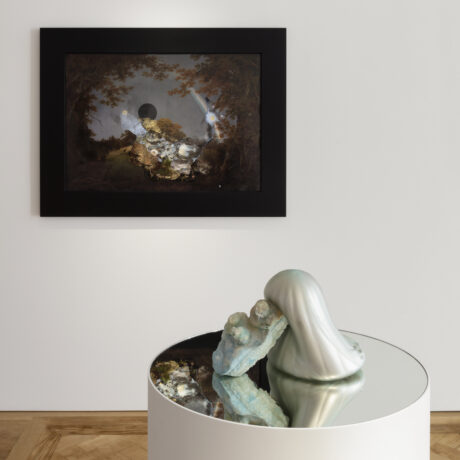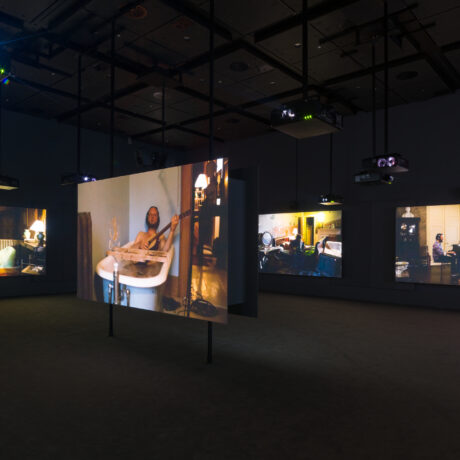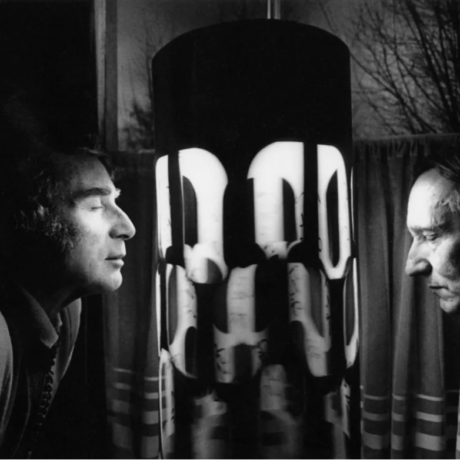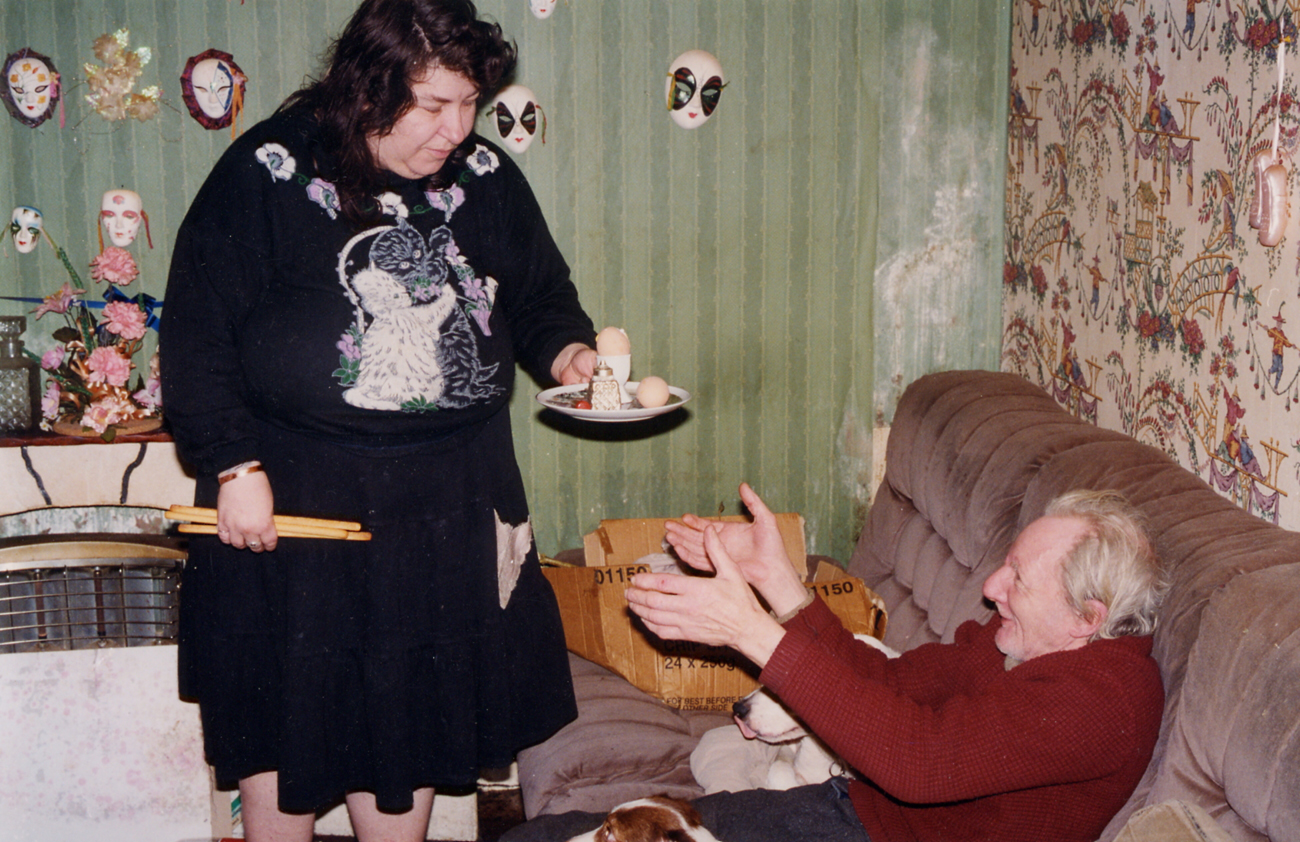
Richard Billingham, Untitled, 1996. Copyright of the artist, courtesy Anthony Reynolds Gallery, London
Elephant and Artsy have come together to present This Artwork Changed My Life, a creative collaboration that shares the stories of life-changing encounters with art. A new piece will be published every two weeks on both Elephant and Artsy. Together, our publications want to celebrate the personal and transformative power of art.
Some weekends when I was growing up, I’d tag along to Alcoholics Anonymous meetings in church halls with my dad. This was mostly because there was nowhere else to go, but also a little bit because I wanted to make sure he went. You get a sense for these things as a kid, don’t you? Everyone would shuffle around helping themselves to cups of strong black tea before taking their seats around a fractured circle of trellis tables. Someone would introduce the meeting, and then there would be silence, eyes downcast in discomfort until someone conjured up the courage to speak first.
I learned a lot about the nature of addiction in those rooms; about how blackouts are like moon phases, with episodes split into ‘fragmentary’ or ‘en bloc’—separating those whose memories eclipse in and out, and those who remember nothing – and I learned, in the end, how to tell the difference between the two, guessing to myself who might be which before the end of each story. A man who had stopped traffic on the motorway when he crawled across it, believing he saw a bar on the other side. En bloc. A woman who had been soliciting sex in public toilets for months without even really being aware. Fragmentary. My father. Where to begin?
It was a bizarre life we had, the two of us together. I could tell you about the good days, when we would get into his car and drive to the top of a big hill and bomb down it at top speed to feel our bellies turn over; or I could tell you about the messy house and his missing teeth, and the lowest periods we shared together as he lost his grip. I don’t think it’s the individual moments that matter, though, it’s more about the overarching shape of things. At times I pretended I didn’t know him in public. Shame is a horrible emotion, and I wore it for both of us.

In college at 16, I started making my own artwork about addiction and I asked my dad if he would make it with me. He’d fallen back off the wagon by then, and his behaviour was erratic and strange, and so that winter the two of us began clumsily feeling around the contours of our relationship and his illness through painting and photography and writing. He kept a diary and wrote letters and I made lists, but neither of us was really being truthful. There were too many parts of us we weren’t willing to share. Soon after, my tutor handed me a copy of Richard Billingham’s photobook Ray’s A Laugh
.
Being a teenager then, and therefore naturally more predisposed to embarrassment, I found the pictures horrifying. Here was someone with similar experiences to me scratching at the ugliest parts of their home life for all to see. I couldn’t believe it. Ray (Billingham’s dad) appears inside of each frame scruffy and bleary-eyed, his skin pallid and loose like crepe paper. Sometimes he has a drink in hand and sometimes he seems to be barely awake, teetering on the edge of consciousness.
“Critics wrote pieces about finding the beauty in the everyday and everyone started calling it ‘squalid realism’. I hate that term”
In one picture he is seen on the sofa with his wife Liz sharing a TV dinner, while in another more difficult scene he slumps on the bathroom floor next to the toilet bowl, arms limp and head lolling. Later, Liz sits on Ray’s lap and the two kiss and laugh together. He falls over, spills things, they fight. It struck me how remarkably these pictures visualise the presence of a man who the rest of the world thinks is small, showing how he can swell to fill a whole room at home.
Billingham took these pictures on a cheap camera, and had them processed at the local chemist. He thought he might use them as formal studies for paintings one day, but mostly it was just something he did as a kid because he wanted to, and so he shoved them into a carrier bag and put them under his bed. Later, a college tutor would coax him to show them and everything would change. As his pictures gained recognition, critics wrote pieces about finding the beauty in the everyday and everyone started calling it ‘squalid realism’. I hate that term. Squalid is such an awful word.
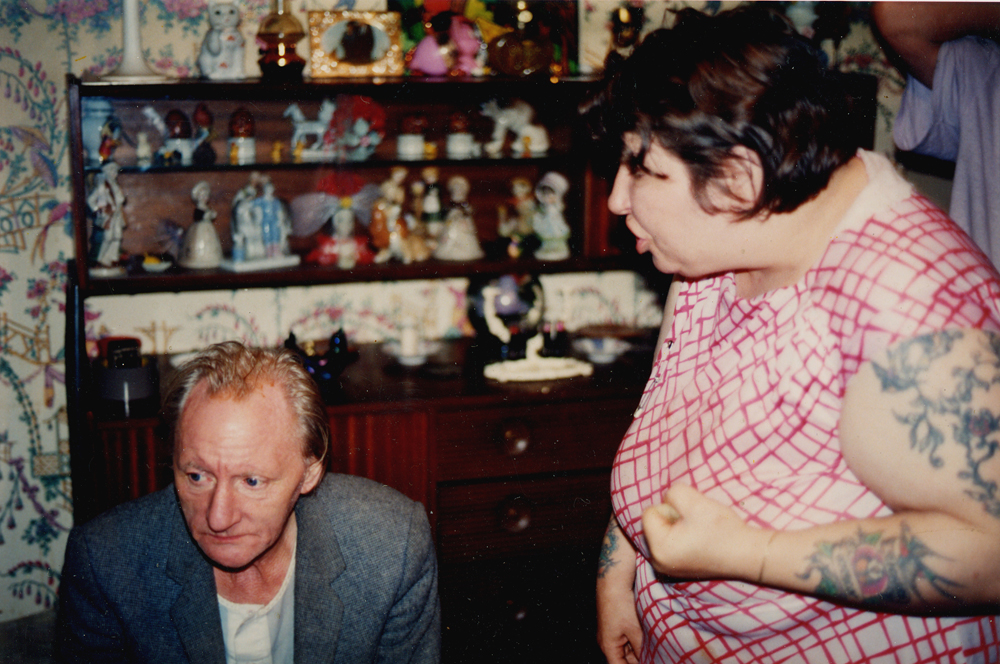
Recently, I devoured Annie Ernaux’s memoir A Man’s Place in one sitting, and it reminded me of the first time I saw Billingham’s work. Ernaux untangles her relationship with her recently-deceased father: ‘Always this fear of being ashamed’, she writes. She conceives a novel in which her father is the main character, but confesses that ‘halfway through the book I began to experience feelings of disgust.’ That line made me think of my whole life.
“I realize now that a novel is out of the question,” Ernaux continues. “In order to tell the story of a life governed by necessity, I have no right to adopt an artistic approach, or attempt to produce something ‘moving’ or ‘gripping’.” She sets out instead to catalogue her father’s words and mannerisms as neutrally as possible—an inventory of memory without sentiment. “No lyrical reminisces, no triumphant displays of irony,” she concludes. When I look at Billingham’s photographs now, I see evidence of existence just as Ernaux writes it; nothing more, nothing less.
“Billingham’s pictures broke my heart. They aren’t beautiful, and I still wince a little when I look at them, but I love them”
For a short while in college, Billingham didn’t admit he was related to the people in the photographs, but one day he thought, “Sod it, why should I hide? This is my mum and dad.” Where we come from matters; webs of shared experience and personal history are woven into the tragedies of everyday life. Billingham’s pictures broke my heart. They aren’t beautiful, and I still wince a little when I look at them, but I love them because they showed me a form of acceptance and creative redemption I had never seen before.
What Billingham taught me, above all, is how to reconcile the different parts of ourselves when we put on our coats and head out into the world. An oft-used technique in talking therapy is to tell a person to try splitting their life into boxes; one for home, one for school, and so on. That helped me once, but it doesn’t now. We are the ugly parts of ourselves as much as the polished ones. I still see the discomfort on people’s faces, sometimes, when I tell them parts of my history, but I no longer feel ashamed of sharing who I am.
Did an artwork change your life?
Artsy and Elephant are looking for new and experienced writers alike to share their own essays about one specific work of art that had a personal impact. If you’d like to contribute, send a 100-word synopsis of your story to pitches@elephant.art with the subject line “This Artwork Changed My Life.”
